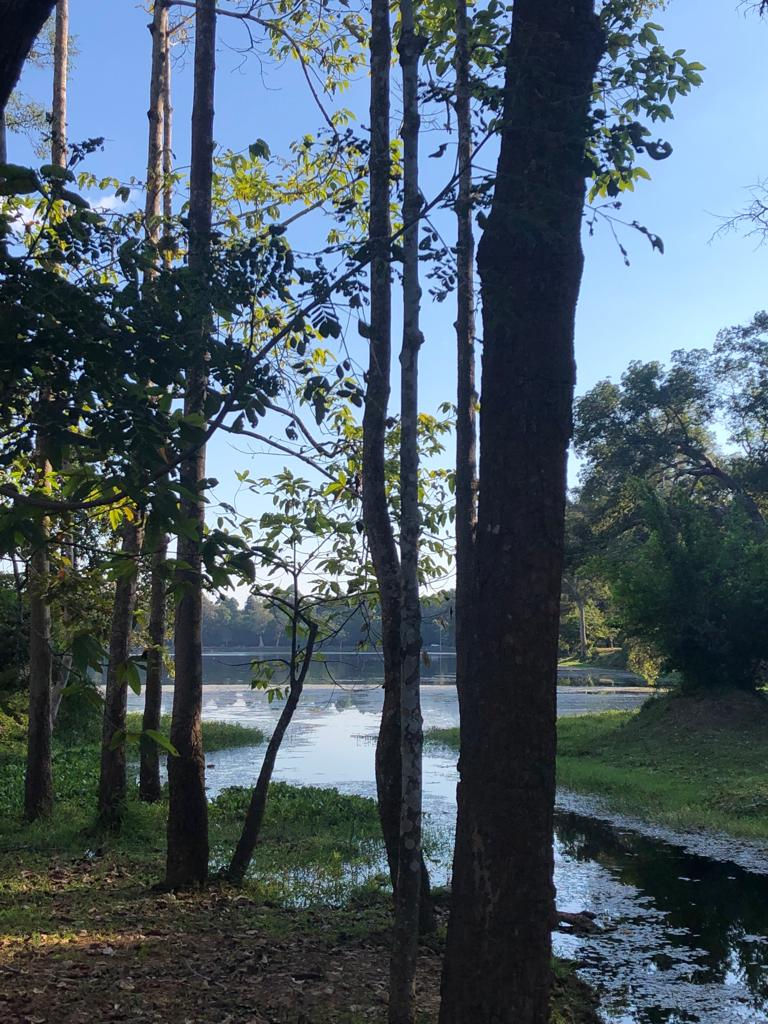What Angkor Can Teach Us About Today's Climate Challenges
- Simon Kaack

- Apr 17, 2024
- 4 min read

The Angkor Empire, which flourished from the 9th to the 15th centuries in what is now Cambodia, is often celebrated for its architectural grandeur, epitomized by the world-renowned Angkor Wat. However, equally impressive, though less heralded, are the empire's sophisticated interconnections with its environment, such as water management systems or agriculture. This system was not only a feat of engineering but also a testament to the Khmer civilization's deep understanding of their environment and their innovative approach to sustainable living. Nevertheless, recent research allows speculations on the contributions of these systems to the downfall of the Empire.
At the heart of the Angkor Empire's success was an intricate and expansive water management network, comprising reservoirs, canals, moats, and ponds. This network served multiple purposes: it provided water for irrigation, supported transportation, managed floods, and ensured a continuous water supply throughout the year.
The barays, enormous water reservoirs, were central to the Angkor Empire's water system. The two largest, the West Baray and the East Baray, were engineering marvels of their time, capable of holding vast quantities of water. These reservoirs were linked by a network of canals that distributed water across the empire, supporting intensive rice agriculture that could sustain a large population.

Besides its utilitarian dimension, the Khmer's water management system also held religious significance. Water was a sacred element in Hindu and Buddhist cosmology, which influenced the Khmer religion. The layout of the waterways and reservoirs reflected the Hindu cosmological order, aligning the physical and spiritual worlds. This integration of belief systems with environmental management underscores the holistic approach the Khmers had towards their surroundings.
The Angkor Empire's water system had profound implications for its society and environment. It enabled the Angkor region to become one of the most populous areas in the world during its zenith. However, the system's complexity also meant that it required meticulous maintenance to prevent silting and ensure efficient water flow.
Furthermore, rice cultivation, an essential component of the Khmer diet and a crucial factor in the civilization's economic and social fabric, benefitted from the steady water supply. The empire's advanced hydraulic engineering, including an elaborate network of reservoirs, canals, and waterways, enabled intensive and extensive rice farming. These innovations allowed the Khmer to produce surplus food, which supported population growth and urbanization.
However, the informed reader knows that the Angkor Empire is nowadays remembered as a civilization of the past. While its decline occurred likely due to a confluence of factors, including socio-political factors, internal strife, changes in leadership, and shifts in social and administrative structures, environmental issues also played a critical role. Some researchers suggest that changes in climate patterns, leading to extreme droughts and floods, could have strained the water management system beyond its capacity, contributing to the empire's eventual downfall.

The empire's heavy reliance on an intensive, rice-based agricultural system might have exacerbated these environmental pressures, highlighting the risks of unsustainable resource management. The intensive agricultural practices, especially rice cultivation, required significant alterations to the natural landscape. The long-term sustainability of these systems is a subject of ongoing research, with some scholars suggesting that environmental degradation might have contributed to the empire's decline. Specifically, water supply was considered vulnerable under higher-temperature climate scenarios, with a decrease in mean annual precipitation by 10–20% sufficient to strain the water resources of the complex.
Over time, regular rainfall was replaced by extended periods of drought and subsequent heavy, destructive rains. This climate instability diminished the productivity of traditional Khmer rice farming areas. In response, farmers expanded their agricultural fields by clearing old-growth forests. However, during intense rainfall, sediment previously stabilized by the forest eroded, filling the barays (reservoirs) and clogging canals with soil. The earth dykes were also repeatedly damaged by floodwaters. Some scholars suggest that the canals responsible for feeding and draining the lakes became so filled with silt that they were either unusable or inefficient, severely impacting the region's ability to support its population and making the maintenance of these systems increasingly challenging.
A major breakthrough occurred last spring when Buckley, Fletcher, and their colleagues Edward Cook and Kevin Anchukaitis, tree-ring specialists at Columbia University, published a study revealing that Angkor endured two prolonged and severe droughts during the century preceding its collapse. The first of these droughts lasted an extraordinary 30 years, followed by a second drought that persisted for 20 years. Each drought period was interspersed with several years of heavy monsoons, which, according to Buckley, likely led to devastating floods.
Specifically, the destruction of a key bridge in Angkor was indicative of excessive water flows that the city's canal systems could not manage. According to Penny, a geosciences researcher at the University of Sydney, this overwhelming flood caused significant infrastructure damage that was beyond the repair capabilities of the residents at the time. He further argues that the issue was not merely drought or flooding alone, but the extreme fluctuations between these conditions. The deterioration of the city's water network, exacerbated by intense monsoon rains and insufficient maintenance, likely accelerated the abandonment of the city.

Moreover, the archaeological remains of Angkor, now engulfed by the forest, highlight nature's ability to reclaim landscapes. In this regard, they provide a stark visual representation of the transient nature of human endeavors in contrast to the enduring force of nature.
While research on Angkor’s decline is ongoing and far from completed, the Empire's water systems offer valuable lessons for contemporary water management and sustainable development. In light of present-day environmental challenges, they serve as a reminder of the importance of harmonizing human needs with natural constraints. The hydraulic systems, once the empire's lifeline, supposedly became its Achilles' heel, offering a poignant lesson on the limits of environmental manipulation.










Comments